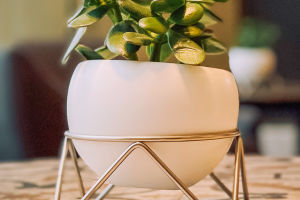Succulents are a diverse group of plants characterized by their thick, fleshy leaves, stems, or roots that store water, enabling them to withstand dry conditions.
These plants belong to the succulent family and encompass a wide variety of species and cultivars, including cacti, agaves, aeoniums, ice plants, and more.
Succulents have gained popularity due to their unique appearance, ease of cultivation, and ability to thrive in arid environments, making them favored choices for both indoor and outdoor planting.
Succulents have captured the hearts of many plant enthusiasts with their distinctive aesthetics and straightforward care requirements.
Their robust leaves and stems store water, enabling them to adapt to arid conditions. Here are some common succulent varieties:
1. Cacti: Cacti are among the most renowned succulents, known for their diverse shapes and spines.
These slow-growing plants exhibit high adaptability to sunlight and dry environments.
2. Agaves: Agaves are another popular member of the succulent family, showcasing a variety of striking rosette forms.
They are known for their architectural beauty and resilience in hot, arid climates.
3. Aeoniums: Aeoniums are rosette-shaped succulents that come in a range of colors and sizes.
They often feature stunning foliage patterns and are excellent choices for container gardening.
4. Ice Plants: Ice plants, also known as Mesembs, are succulents with jewel-like flowers that appear to shimmer like ice crystals.
They are prized for their dazzling floral displays and thrive in coastal regions.
These are just a few examples of succulent varieties that offer not only visual appeal but also easy cultivation and management.
Whether placed indoors or outdoors, succulents can impart a distinctive charm to any environment.
By selecting the right succulents for your space and providing appropriate light and water, you can enjoy the beauty they bring.
Succulents offer numerous benefits, some of which are outlined below:
1. Enhanced Aesthetics: Succulents are known for their unique and captivating appearance.
Their succulent leaves, diverse shapes, and vibrant colors make them perfect for enhancing both indoor and outdoor spaces.
They bring a touch of natural beauty and infuse life and vibrancy into any setting.
2. Low Maintenance: Succulents are generally low-maintenance plants that require minimal care.
They have relatively modest soil and light requirements and adapt well to indoor temperatures and humidity levels.
Even individuals without a green thumb can successfully cultivate succulents, as they typically don't demand excessive attention.
3. Air Purification: Like other plants, succulents contribute to improved indoor air quality by absorbing carbon dioxide and releasing oxygen. Additionally, they can filter out harmful substances from the air and release negative ions, thus purifying the surrounding environment and creating a fresher indoor atmosphere.
4. Stress Relief: Connecting with nature has proven benefits for mental well-being.
Engaging in the cultivation and care of succulents can serve as a form of relaxation and meditation, aiding in stress reduction, anxiety alleviation, and tension relief.
Observing the growth and transformation of these plants can be a source of joy and fulfillment.
5. Easy Propagation: Succulents possess robust reproductive capabilities, often able to be propagated through simple methods such as stem cuttings, offsets, or leaf propagation.
This allows for easy expansion of your succulent collection, sharing with loved ones, or offering them as thoughtful gifts.
In conclusion, succulents offer not only aesthetic appeal but also easy cultivation and maintenance, along with air-purifying and soul-soothing benefits.
Whether used as interior decor or integrated into outdoor gardens, succulents continue to captivate plant enthusiasts and remain a popular choice for plant lovers of all levels of experience.


